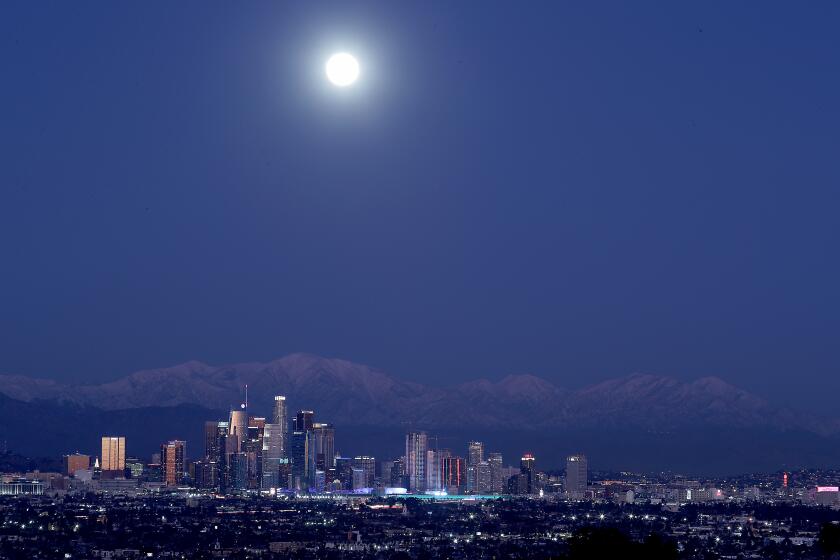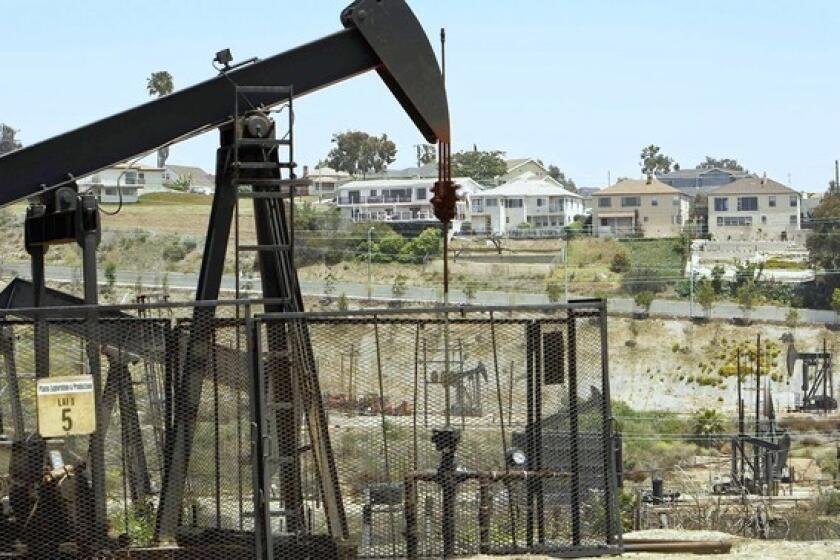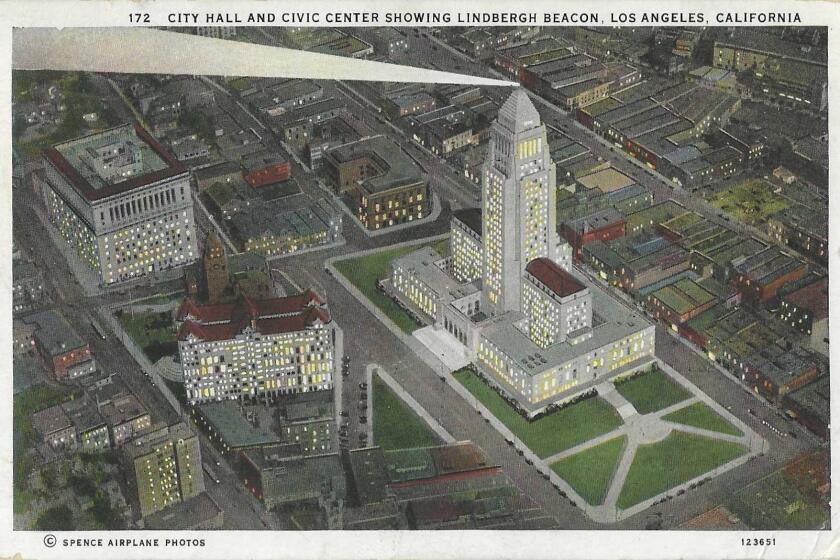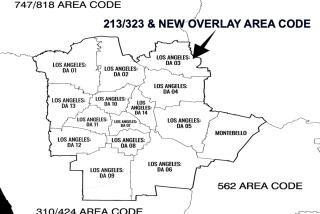310, 213, 818: Why Southern California is obsessed with area codes

Long ago, when the world was young and there were only landlines, one area code ruled them all, from the Mexican border to Bakersfield: 213.
Then it began to divide and multiply. 714 was born, and 805, and then L.A. became the first burg with three area codes within the city limits.
Now, nearly 75 years after the birth of 213, Los Angeles County has 10 area codes, eight originally rooted in geography and two that float atop heavily used 310 and 818.
Does your area code mean anything to you? In a footloose megalopolis that mashes city against indistinguishable city, a place that topples the kind of historical landmarks other cities depend upon to navigate identity, we make do with what we have.
And what we have, to the frequent mystification of newcomers, is a nest of area codes.
In 1991, a year before a new 310 area code snatched more than two million telephones from the bosom of 213, a sociologist named James Katz, who studied the social effect of telephone technology said that Californians were pricklier about their area-code identities than people elsewhere, that these three digits were like compass points on our mental map, and thus, “when you take away the number, in a certain sense you’re erasing the identity.”
Explaining L.A. With Patt Morrison
Los Angeles is a complex place. In this weekly feature, Patt Morrison is explaining how it works, its history and its culture.
Since the “big bang” from the original 213 spalled off so many area codes, what have those identities become? In 1994, the writer of a Times op-ed explained, perhaps tongue in cheek, what a numerologist had told him: That 213, the original hardcore heart of L.A., is the area code of the working class, “without pretensions.” How could the numerologist omit the fact that 213 is also the area code for civic Los Angeles, which is almost exclusively about political pretensions? The telephones of 310 occupy a more “highbrow, ritualized, sterile environment,” and the phone folks of 818 — reaching from valley to valley then, the San Fernando to the San Gabriel — are “old-fashioned stand-up values” incarnate.
Gratifyingly, the numerologist found Manhattan’s coveted 212 represented “a certain pettiness … the Ross Perot of area codes.” Exhibit A: the “Seinfeld” episode where Elaine is so desperate to recover her lost 212 phone self that she takes over the 212 number of her dead neighbor.
They still lend themselves to stereotypes:
- 310: The enviably rich, and the plastic surgeons who enable them. Phone scammers have been masking with this area code, probably because they figure people are curious to know who’s calling them from another income bracket.
- 661: The cowboy boonies and Edwards Air Force Base.
- 818: The Valley Girl boonies and Bing Crosby’s R-1 paradise.
- 626: The Tournament of Roses parade, and that other valley.
- 213: Staples Center and LAPD headquarters.
- 323: The Hollywood Walk of Fame and vintage-bungalow neighborhoods expelled from 213.
- 562: The Queen Mary and L.A. County’s only off-leash dog beach.
L.A. is a place like no other. You’ve got questions. Patt Morrison probably has answers and can definitely find out.
Phone geography can be identity, but it is not destiny. Can’t afford a house in Laguna Beach? You can still afford its 949 area code status, those golden digits of yacht brokers and unreal housewives, by buying a phone number for sale on websites like phonenumberguy.com.
That site’s owner, Ed Mance, told the Washington Post several years ago that 310 was the most coveted of all area codes. “They’re extremely rare. People can’t get a 310, even a random 310 anymore.” As for overlays-come-lately, we are, frankly, snobs. “Nobody,” Mance said, “wants a 424, especially if they’re in business.”
Which commands the question: Why are phone numbers in desirable area codes unclaimed if every area code supposedly gets used up so fast that the phone companies keep demanding new ones?
In 1999, as the massive telecom SBC lobbied the feds to OK higgledy-piggledy area code overlays nationwide, unmoored from any sense of place, California’s Public Utilities Commission was asking the feds to make phone companies act like honest brokers. Californians, the CPUC said, were already on to the notion that “the number ‘shortage’ is completely artificial, and the need to create new area codes is thus spurious.”
Along La Cienega near Inglewood. At Beverly Hills High School. In people’s backyards in Echo Park. Atop Signal Hill. Oil wells are everywhere in and around L.A. You sure don’t see that in Paris (France).
Who dealt these area codes in the first place? Why did Vermont get 802 and Southern California 213?
The answer is the word “dial.” We’ve ditched the dial for the keypad, but in 1947, the area code’s launch year, “cht-cht-cht” was the sound of the rotary dial spinning back into place.
So the lower the digits in a phone number, the less time it took for the dial to spin back so you could dial the next. Big cities — Manhattan, Los Angeles, Chicago — got low-digit area codes that were faster to dial, 212, 213, 312. More sparsely populated states were assigned higher numbers. In Vermont and Hawaii, the locals love hoodies and caps printed with the states’ only area codes, 802 and 808, like they were graduates of some area-code college.
Something tells me that just isn’t going to happen with 424 — wherever it is.
Los Angeles is a big, complicated place. Patt Morrison explaining how it works, its history and its culture in Explaining L.A. on latimes.com.
More to Read
Start your day right
Sign up for Essential California for news, features and recommendations from the L.A. Times and beyond in your inbox six days a week.
You may occasionally receive promotional content from the Los Angeles Times.











